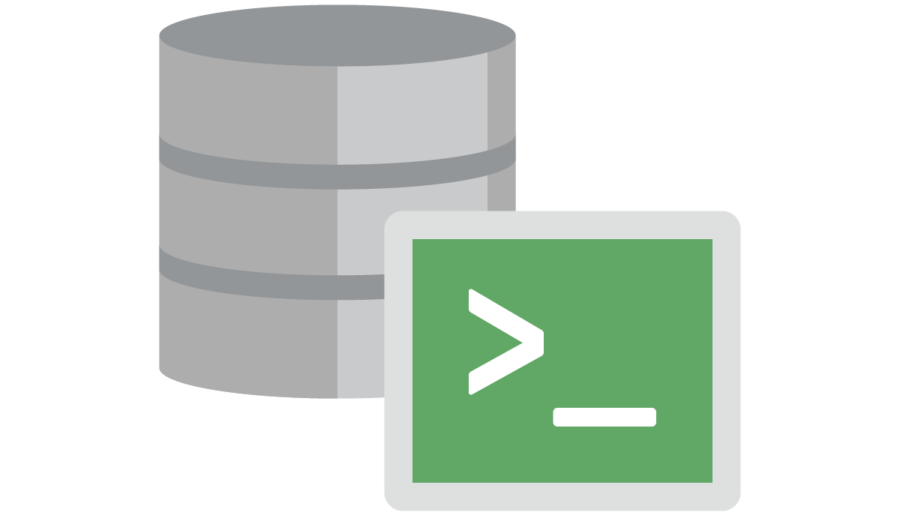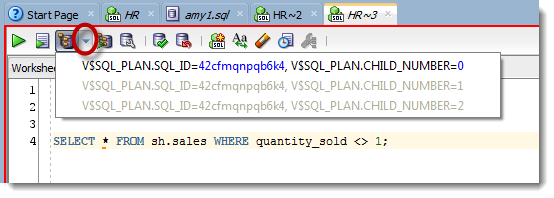Update, July 2018: A reader, thanks Sabine!, noticed the Clone feature is no longer available. This IDE feature was designed for FILES in mind, and it doesn’t extend itself well when applied to our worksheet and database object in the JDev framework. Working on a table? Maybe you need to investigate the stats while you also browse some data. But this is a BIG table. You know how to do the ‘split document trick,’ but…
One of the cooler features SQL Developer offers is the ‘split document.’ If you don’t know what I’m talking about, please take 90 seconds and read this short post first. Ok, well that worked well for pretty much every type of editor in SQL Developer save one – the SQL Worksheet. Let’s say you wanted more ‘type and read’ space for your script or statement, but you also didn’t want to lose your results grid…
“Explain Plans are useless.” Yikes. Really? Don’t we spend all day looking at execution plans? To clarify, I would say that explain plans could be useless. If you do an Explain, you’re actually looking at a theoretical plan, not the ‘actual’ plan. From the docs: With the query optimizer, execution plans can and do change as the underlying optimizer inputs change. EXPLAIN PLAN output shows how Oracle runs the SQL statement when the statement was…
Ugly code, we all write it. I don’t mean bad code either, just hard to read code. Developers who haven’t figured out how to use the TAB and ENTER keys – what’s up with that? — and why is Jeff talking to himself in his Seinfeld voice again? So one of the features in SQL Developer is the Formatter. With a simple right-click (or a Ctrl+F7), you can take your code from ugly to beautiful,…
A new feature in Oracle SQL Developer version 4.0 offers to address grammatical issues with your SQL statements. We call these indicators ‘Semantic Analysis Info Tips.’ The easiest way to see one of these ‘tips’ is to try out your favorite sql statement in a worksheet: 876160915686cdfe7b2b9e_000002 Accessing the ‘Tip’ Place your mouse over the red squiggle line indicator… Once the tip is available, you can invoke the grammar ‘fix’ by clicking on the hyperlinked…
Being asked when the next version of your product is going to be released is a gut-wrenching question. The community gets excited when a new release is due – who doesn’t like new things to play with? And I’d love to tell everyone when exactly that will happen. But, the very the second I shared THE DATE, I’d be branded a liar. You see, dates slip. And being in a position to not ship product…
Oracle Open World 2012 left me exhausted. Apart from the social and fun stuff like running across the Golden Gate with a few co-workers and keeping up with social and business dinners, we had a ton of presentations, Hands On Labs, and of course the demo pods to man in the Exhibitor Hall. 2013 takes it up a notch or three. We’ll have 8 official SQL Developer-themed sessions, 5 Hands-On Labs, and 3 Demo Pods.…
I get this question a lot. The question tells me a few things: you LIKE the animated GIFs here on thatjeffsmith – cool, I’ll keep doing more you want to make your own – awesome, I’m helping make the world a more animated place that’s pretty much it, I should have said a couple of things, oh well I use Camtasia Studio 7 from TechSmith If you want a more official ‘answer’ to this question,…
As you may have heard, Oracle Database 12c is now available. In addition to the binaries and docs going out, we also published a few new Oracle By Example (OBE) chapters. You can find those links here on our product page. Do you know who found these, practically the minute they were published? An enterprising DBA-extraordinaire who was just happening to be presenting at the ODTUG KScope13 conference in New Orleans. He thought it would…
SQL Developer has had an object search for quite a while, however we decided it wasn’t good enough, so we enhanced it! You can now search more things, and the search results are easier to work with. Here’s a quick demo to see it live in action: How it works For your your connection, you’ll need to set a few search parameters, the SCHEMAs you want to look into, and then what you want to…






